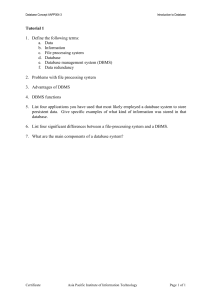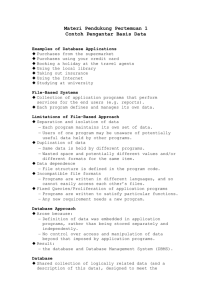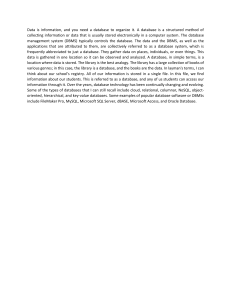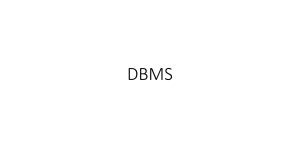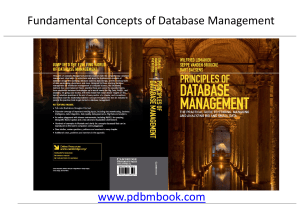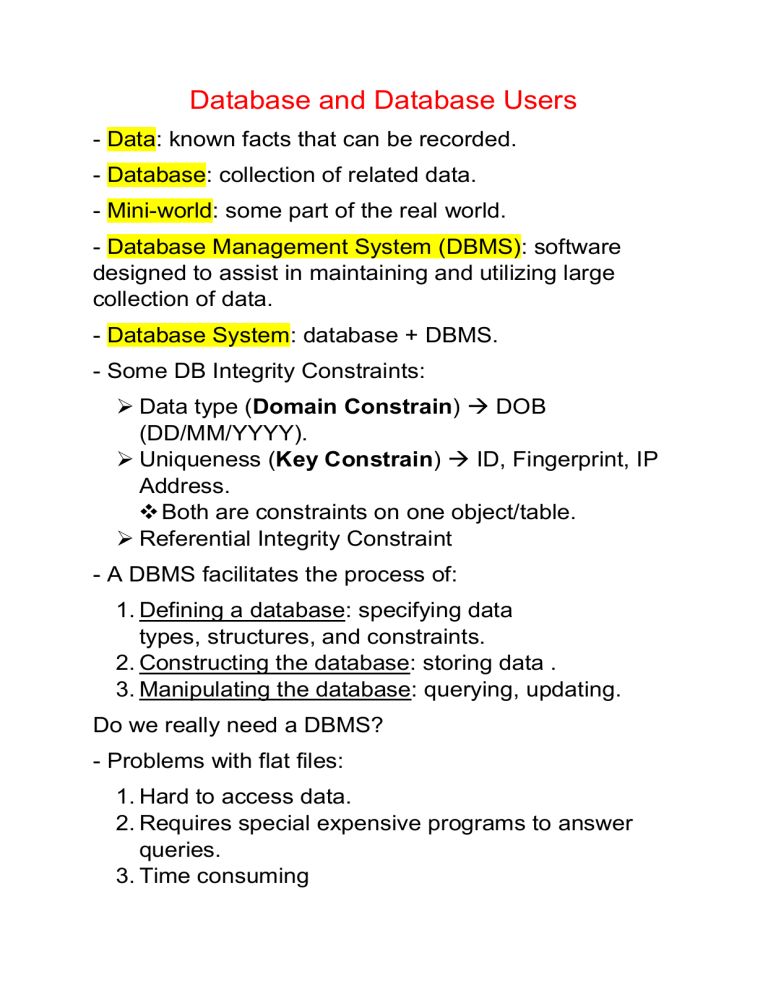
Database and Database Users - Data: known facts that can be recorded. - Database: collection of related data. - Mini-world: some part of the real world. - Database Management System (DBMS): software designed to assist in maintaining and utilizing large collection of data. - Database System: database + DBMS. - Some DB Integrity Constraints: Data type (Domain Constrain) DOB (DD/MM/YYYY). Uniqueness (Key Constrain) ID, Fingerprint, IP Address. Both are constraints on one object/table. Referential Integrity Constraint - A DBMS facilitates the process of: 1. Defining a database: specifying data types, structures, and constraints. 2. Constructing the database: storing data . 3. Manipulating the database: querying, updating. Do we really need a DBMS? - Problems with flat files: 1. Hard to access data. 2. Requires special expensive programs to answer queries. 3. Time consuming 4. Data inconsistency: accessing data simultaneously by many users. 5. Data redundancy: data stored twice or more. Characteristics of Database Approach 1. Self-describing nature of a database system: Contains not only the data, but also complete description of the data structure and constrains. - Catalog: stores the definition and structure of the data used by DBMS software or database users. - Meta-data: the information stored in the catalog. 2. Insulation between program and data: Previously, changes to files required changes to all programs accessing these files. In DBMS, we have program-data independency, changes are reflected only in catalog and no programs need to be modified. 3. Support of Multiple Views of the Data: Different users require different views of the database. View: subset of the data or virtual data derived from database file but not physically stored Depending on user's interests, different views of the database maybe created 4. Sharing of Data and Multiuser Transaction Processing: Allowing multiple users to access the data requires Concurrency control: software to ensure controlling updates from multiple users such that the result is correct. - This supports online transaction processing (OLTP) Advantages of DBMS: Data Independence Efficient data access Data integrity via integrity constraints Concurrent access and crash recovery Data administration and controlling redundancy - DBMSs are expensive due to 1) Hardware, software, and training. 2) Overhead for providing security, concurrency control, recovery, and integrity functions. - DBMSs are not desirable when: Database and applications are simple, well defined, and not expected to change. Multiple-user access to data is not required. Many real-time requirements that may not be met because of DBMS overhead.
